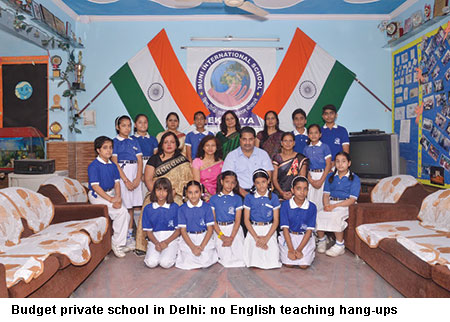 A ground zero reality which communists, socialists and assorted lefties, who despite the collapse of communism worldwide continue to dominate India’s academy, refuse to acknowledge is that there is a steady exodus of pupils out of government schools, especially public primary-secondaries run by state and local governments.
A ground zero reality which communists, socialists and assorted lefties, who despite the collapse of communism worldwide continue to dominate India’s academy, refuse to acknowledge is that there is a steady exodus of pupils out of government schools, especially public primary-secondaries run by state and local governments.
The reality which education bureaucrats and ideologically obstinate academics who abhor “commercialisation of education” refuse to acknowledge is that even bottom-of-pyramid households prefer to send their children to mushrooming fees-levying neighbourhood budget private schools (BPS, many of them ‘unrecognised’ and illegal) whose number according to the Delhi-based think tank Centre for Civil Society, has risen to almost 500,000 countrywide. The unique sales proposition of BPS is that their promoters have no hang-ups about teaching English, India’s link language as well as the language of business, industry and upward social mobility.
With government schools — except well-funded schools such as the 1,700-plus K-12 urban Kendriya Vidyalayas (KVs) and 591 class VI-XII rural Jawahar Navodaya Vidyalayas (JNVs) promoted by the Central government — emptying out across the country, the response of state and local governments has been to merge and consolidate public schools in which teachers (who enjoy total security of tenure) often outnumber pupils.
In Delhi, the national capital governed by the Central, state government and three municipal corporations which together run 1,750 public primary schools with an aggregate of 776,000 students, 200 almost empty schools have reportedly been marked for closure, an initiative rationalised as mergers and consolidation which would result in better utilisation of resources, efficiency, staff and teacher pooling to fill up vacancies.
According to Union human resource development (HRD) ministry officials, an estimated 260,000 schools under the management of state and local governments across the country are candidates for closure and/or merger with other government schools which may or may not be in their neighbourhood. Therefore, social activists across the country are up in arms because a large number of such school mergers would contravene s.3 (1) of the landmark Right of Children to Free & Compulsory Education (RTE) Act, 2009 which guarantees every child a primary/elementary school within 1 km of her residence.
The continuous exodus of pupils from government and municipal schools countrywide has prompted anguish and heart-searching. “Section 29 of the RTE Act which provides standardised curriculum guidelines and assessment procedures for all elementary schools is totally ignored in debates on education. Government schools across the country need to standardise class I-VIII education according to s.29 guidelines to raise teaching-learning standards and prevent children from dropping out of government schools. This situation cannot be allowed to persist,” Congress party Rajya Sabha member Pradeep Tamta informed a recent consultative meeting of the RTE Forum, a coalition of over 10,000 NGOs monitoring implementation of the RTE Act.
Official data of Citizen’s Report by the Wada Na Todo Abhiyan group on four years of NDA government indicates that while the increase in the number of government schools countrywide is a mere 2 percent since 2014, the number of private schools — mainly BPS — has risen by over 26 percent, clearly indicating a shift in popular preference for private schools notwithstanding free-of-charge tuition, mid-day meals, uniforms and textbooks provided — or supposed to be provided — by government and municipal schools.
“There is a conspiracy to defame the government schooling system. Any incident in a government school is villianised to paint the whole system bad,” says Naveen Sangwan, general secretary of the All Delhi Primary Teachers Association in a typical establishment response, which inevitably fails to suggest any meaningful reforms and absolves the unionised community of 5 million government school teachers of all blame.
The establishment response to the rising popularity of BPS with bottom-of-pyramid households is s.19 of the RTE Act which specifies infrastructure norms designed to shut down low cost BPS enterprises.
But s.19 fines and closures are being strongly resisted by BPS schools banded under NISA (National Independent Schools Association). During the past few years NISA has persuaded several high courts across the country to issue stay orders against the closure of BPS primaries.
Slowly but inexorably, pressure is building on government schools to get their act together failing which the exodus into BPS will gather momentum. Meanwhile mergers of government schools are mere band-aid solutions which won’t cure the root problems of Delhi’s failing municipal schools.
Autar Nehru (Delhi)























